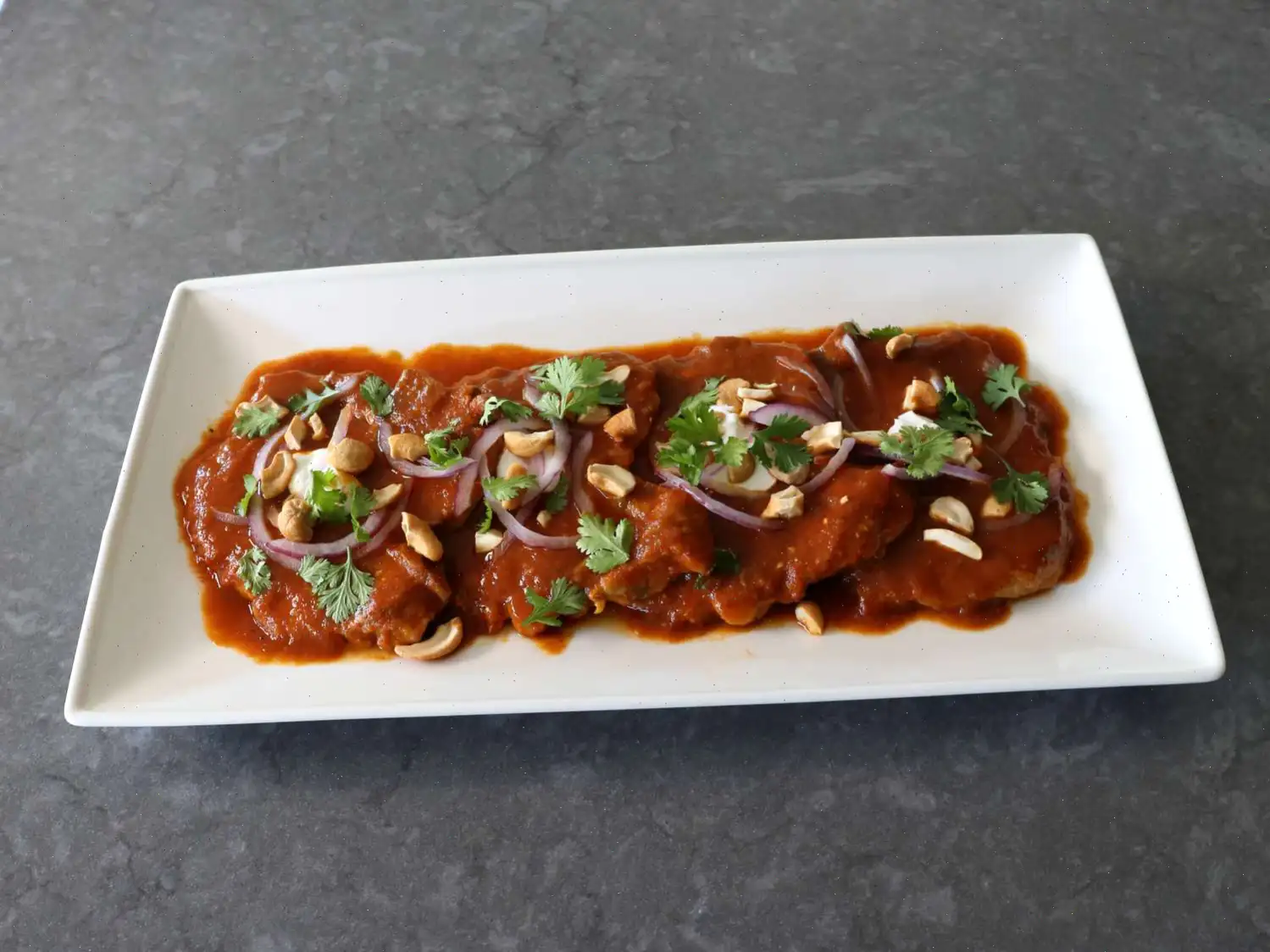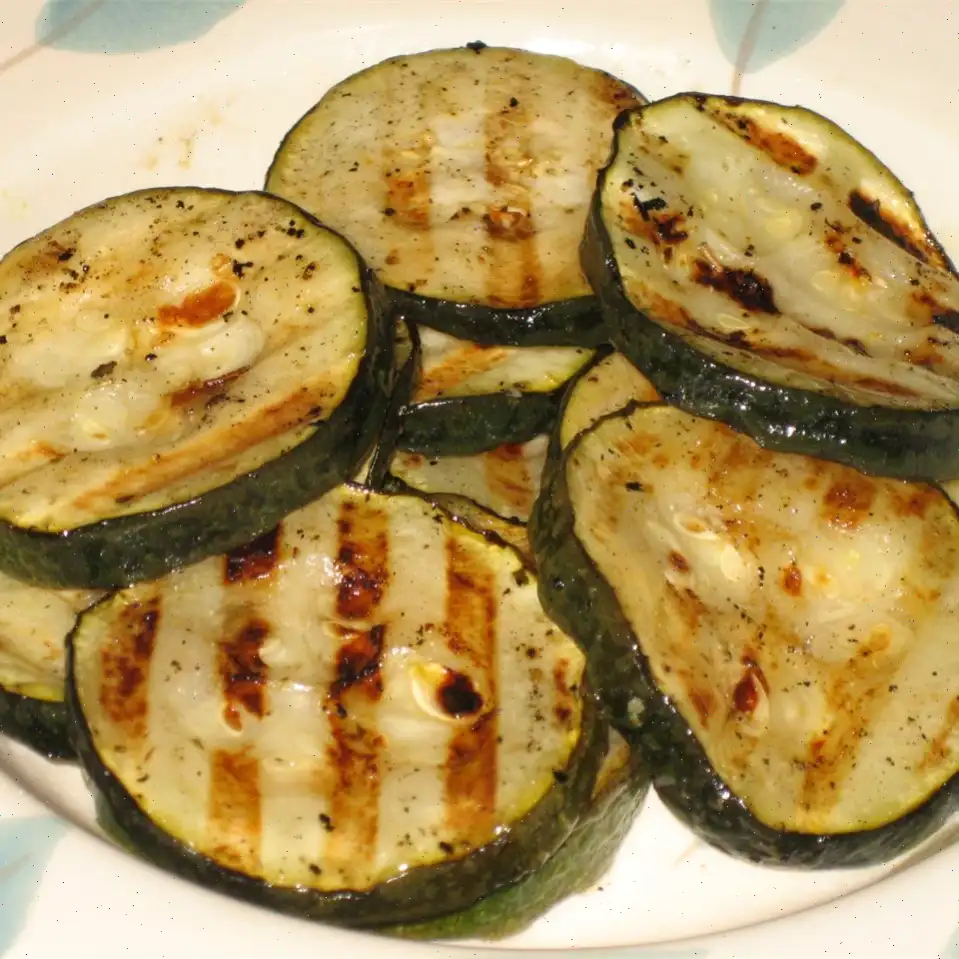
Fresh Tomato Curry Sauce Recipe
Ingredients
- 4 thin-cut pork chops
- Salt and freshly ground black pepper to taste
- 1 pinch cayenne, or to taste
- 1 tablespoon avocado oil or clarified butter
- 3/4 cup diced yellow onion
- 2 tablespoons finely diced jalapeno pepper
- 1 tablespoon minced ginger
- 3 cloves garlic, sliced
- 1/2 teaspoon salt, plus more to taste
- 1 teaspoon garam masala
- 1/2 teaspoon ground cumin
- 1/4 teaspoon ground turmeric
- 2 cups roughly chopped fresh tomatoes
- 1 teaspoon tamarind paste, or to taste
- 1/3 cup water
- Garnish (optional):
- 2 tablespoons plain yogurt
- 1/4 cup sliced red onion
- 1/4 cup chopped roasted salted cashews
- 1/4 cup freshly torn cilantro leaves
Directions
- Use scissors to snip 4 or 5 small cuts around the edge of each chop to prevent curling. Season both sides of the pork chops with salt, pepper, and cayenne.
- In a nonstick skillet, heat the oil over high heat. Sear the pork chops on both sides until lightly browned, about 1 1/2 minutes per side. Remove the chops from the pan and transfer them to a plate. Reduce heat to medium.
- To the same pan, add onions, jalapeno, ginger, garlic, and 1/2 teaspoon of salt. Cook, stirring, until the onions turn translucent, about 3 to 5 minutes.
- Add garam masala, cumin, and turmeric to the pan. Stir and cook until the spices become fragrant, about 1 minute.
- Stir in the chopped tomatoes and tamarind paste. Add the water and simmer until the tomatoes have completely softened and collapsed, about 10 minutes.
- Place a mesh strainer over a bowl and pour the tomato mixture into it. Use the back of a spoon or ladle to press and scrape until only the tomato seeds and skins remain in the strainer.
- Return the strained sauce to the pan. Add the pork chops and any accumulated juices from the plate. Bring the mixture to a gentle simmer over medium heat. Then, reduce the heat and simmer on low until the meat is tender, about 5 minutes.
- Taste the sauce and adjust seasoning if needed. For an extra touch, serve the pork chops topped with plain yogurt, red onion, roasted salted cashews, and fresh cilantro leaves.
Chef's Note
This recipe focuses on the rich, flavorful sauce and can be paired with any pan-fried meat, vegetables, or even pasta. The only adjustment needed would be the simmering time, depending on the type of meat you use. For cuts requiring longer cooking times, add extra water or broth as needed.
Nutrition Facts (per serving)
- Calories: 157
- Total Fat: 8g (11% Daily Value)
- Saturated Fat: 2g (9% Daily Value)
- Cholesterol: 33mg (11% Daily Value)
- Sodium: 368mg (16% Daily Value)
- Total Carbohydrate: 10g (4% Daily Value)
- Dietary Fiber: 2g (7% Daily Value)
- Total Sugars: 5g
- Protein: 12g (23% Daily Value)
- Vitamin C: 18mg (20% Daily Value)
- Calcium: 40mg (3% Daily Value)
- Iron: 1mg (7% Daily Value)
- Potassium: 445mg (9% Daily Value)
* Percent Daily Values are based on a 2,000 calorie diet. Your daily values may be higher or lower depending on your calorie needs.
History of Origin
Fresh Tomato Curry Sauce has its roots in the traditional cooking practices of South Asia, where tomatoes became a key culinary ingredient only after their introduction from the Americas. Over time, Indian cooks began blending ripe tomatoes with regional spices, creating vibrant sauces that balanced sweetness, acidity, and heat. This modern version builds upon centuries of spice trade influences, transforming simple produce into a richly seasoned, aromatic dish that celebrates both heritage and seasonal freshness.
Regional Characteristics
In northern regions of India, tomato-based curries tend to be smoother and slightly sweeter, often enriched with yogurt for a velvety texturean element echoed in this recipe. In southern regions, cooks frequently enhance tomato curries with tamarind, lending a tangy depth that brightens the spices. The sauce in this recipe mirrors that southern flair through the use of tamarind paste, creating a refreshing contrast between acidity and warmth. Each region adds its own interpretation, shaped by local produce and culinary tradition.
Differences From Similar Dishes
Unlike heavy cream-based curries, Fresh Tomato Curry Sauce is light, clean, and driven by the natural flavor of ripe tomatoes. It also differs from classic masala gravies, which typically use pureed onions and extended simmering for richness. Here, the emphasis is on freshness: the tomatoes are softened, strained, and transformed into a silky sauce without excess fat. The result is a curry that feels both rustic and refined, focusing on bright aromatics rather than dense, buttery textures.
Where It Is Typically Served
This type of curry sauce is commonly enjoyed in home kitchens, particularly during tomato season when produce is at its peak. It pairs beautifully with grilled or pan-fried meats, vegetables, rice, or flatbreads. In contemporary dining, you may find variations of fresh tomato curry offered in casual Indian cafs, fusion restaurants, and farm-to-table eateries that highlight local produce. Its versatility makes it suitable for both weekday meals and special gatherings.
Interesting Facts
One fascinating aspect of tomato-based curries is that they adapt easily to different cooking methodssome chefs roast the tomatoes beforehand to intensify their sweetness. Another interesting detail is that strained tomato sauces, like the one used here, can be traced back to traditional techniques meant to achieve a smoother consistency without modern blenders. The combination of tomatoes, spices, yogurt, and nuts reflects a blend of culinary influences spanning Mughal, regional Indian, and contemporary Western cooking. Despite its simplicity, the sauce is celebrated for its ability to complement almost any protein or vegetable.
You can listen to this recipe in AI audio format. Simply click the play button below to listen to the content in a format that suits you best. It’s a great way to absorb information on the go!
FAQ about Fresh Tomato Curry Sauce Recipe
Comments
Larry Roberts
04/14/2025 05:51:33 PM
Usually, every FW recipe is a home run for me. However, this one fell short. I prepared it with fish, but the flavor didn't quite hit the mark. To enhance it, I had to add extra spices, including fennel seeds, and swapped out the jalapenos for a spicier, more fruity pepper.
Emma Anderson
03/21/2025 06:03:11 AM
Such a fantastic way to showcase fresh tomatoes! This Indian-inspired dish is light and flavorful, a refreshing change from rich and heavy dishes. Will definitely be adding this to my regular meal rotation.







